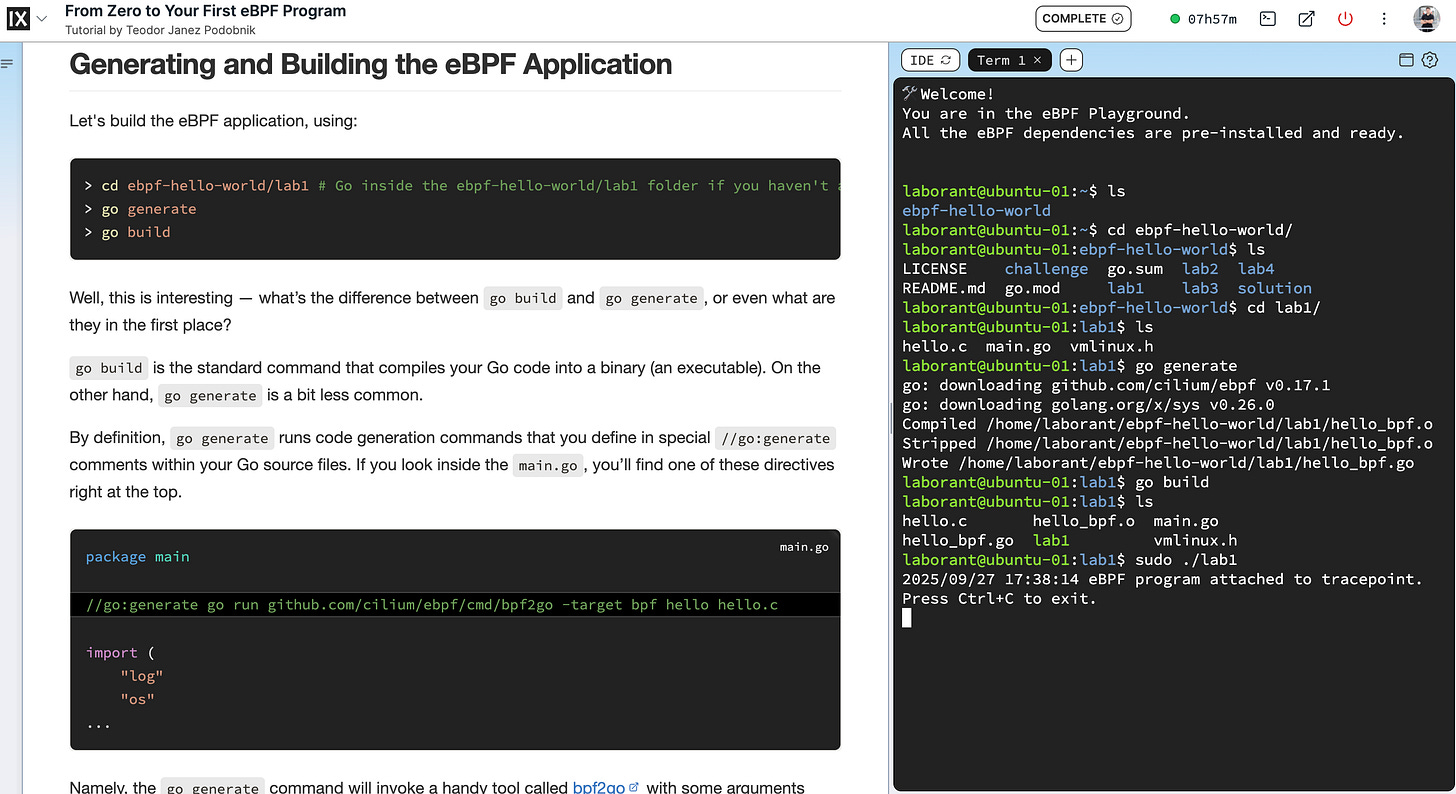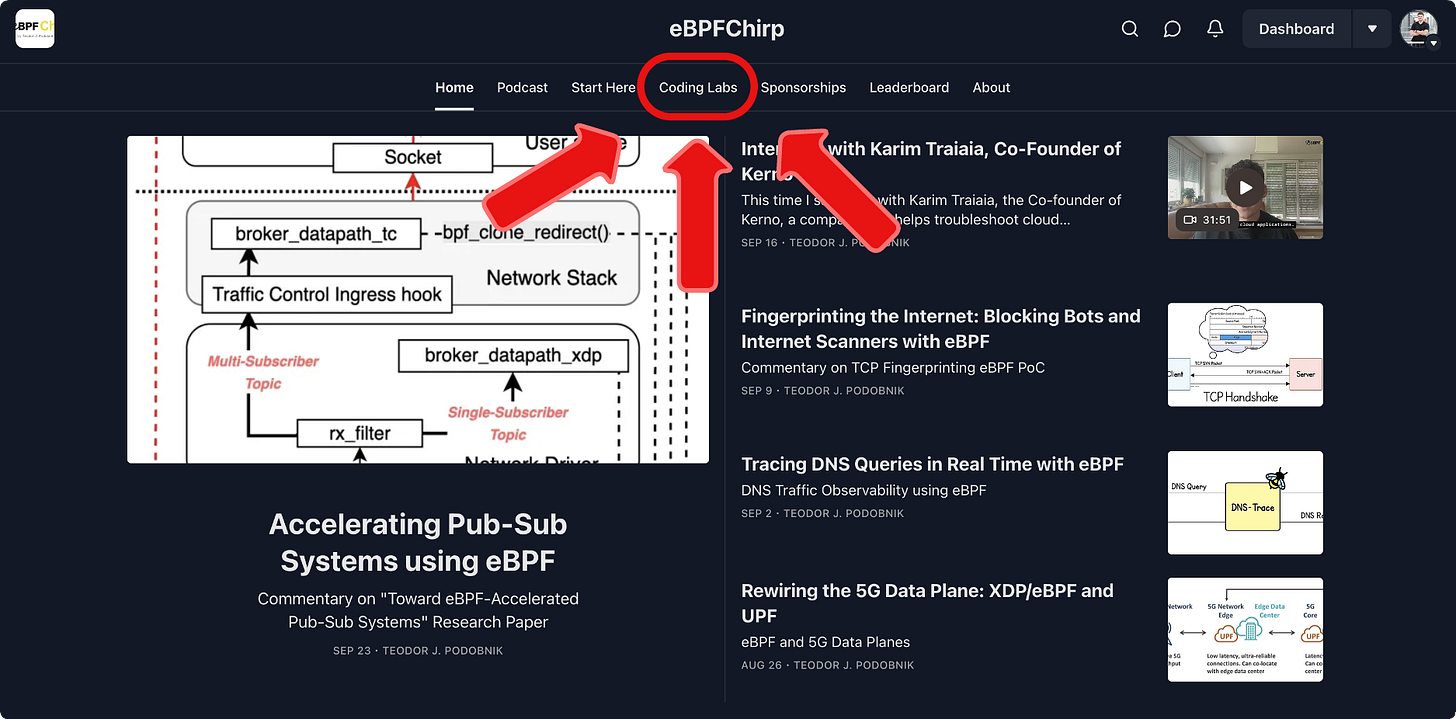eBPFChirp has always been my “baby”—a side hustle where I’ve happily poured dozens of hours every week. And it’s always worth it when the newsletter goes out and I see thousands of people reading it.
But as I explored different eBPF topics and thought about the next steps for my readers, I kept feeling that something was missing.
And I think we can all agree: reading about a technology only gets you so far. The real learning happens when you run the code, tweak a few lines, and see the effects for yourself.
Now, with eBPFChirp newsletter, you’ve never been forced to just read—you could always run the tutorials locally. But let’s be honest, it comes with a bit of friction:
You might not have the right kernel version.
You might worry about breaking your machine (even though eBPF would never actually brick it).
Or maybe you just don’t feel like spinning up a VM if you’re on macOS or Windows.
At the same time, switching between a blog post and a terminal also just doesn’t feel natural—and that little bit of friction often stops people from trying things out.
That’s why I’ve decided to expand eBPFChirp with online coding labs—hosted on the iximiuz Labs platform.
It’s been a few weeks of preparing the environments and getting used to the syntax—but now you can run eBPF right in your browser.
I’ve already prepared several labs for you to try out:
From Zero to Your First eBPF Program: Learn the basics of writing and loading your first eBPF program.
Storing Data in eBPF: Your First eBPF Map: Learn how to use eBPF maps to persist state by building a simple counter that tracks how many times specific binaries are executed.
Inspecting and Monitoring eBPF Applications: Learn how to use bpftool to inspect eBPF programs and maps in the kernel, and bpftop, a top-like interface for monitoring eBPF program activity in real time.
eBPF Verifier: Why the Kernel Can Safely Run eBPF Programs: Learn how the eBPF verifier ensures that eBPF code can run safely in the kernel.
eBPF Challenge for Beginners: In this challenge, you’ll test your understanding of the key eBPF concepts introduced in the previous tutorials.
I intentionally started with beginner-friendly ones, but more advanced concepts will be rolling out every week.
In future, you can find the full list in the Coding Labs tab.
Ideally, I’d also keep up the same publishing pace, but since this is still a one-man, free-time project that doesn’t pay the bills, I’ll need to make some tradeoffs.
I’m still figuring out how to manage my time and adjust the schedule, so I’d love to hear your thoughts and preferences.
Also not all coding labs will be free. The first few will be open to everyone, but most future labs will be available only to paid subscribers.
And the reason for that is (relatively) simple.
I’ve been writing about eBPF (and cloud-related topics) for the past 5 years across different platforms, and bringing eBPFChirp to this stage has taken a lot of effort.
But lately, it’s been consuming more and more of my time—time I’d love to dedicate fully.
For me, this was never about getting “rich”—all the content up to now has been free. But rather, the goal behind this monetization is to create space for me to focus more deeply on eBPFChirp and, hopefully, make it my full-time job.
Right now, juggling it with other gigs makes that tough.
I’d be grateful for any kind of support or donations, and I’m always open to sharing content with those who can’t afford it—because at the end of the day, my main goal is to help more people learn and benefit from eBPF.





That's pretty cool!